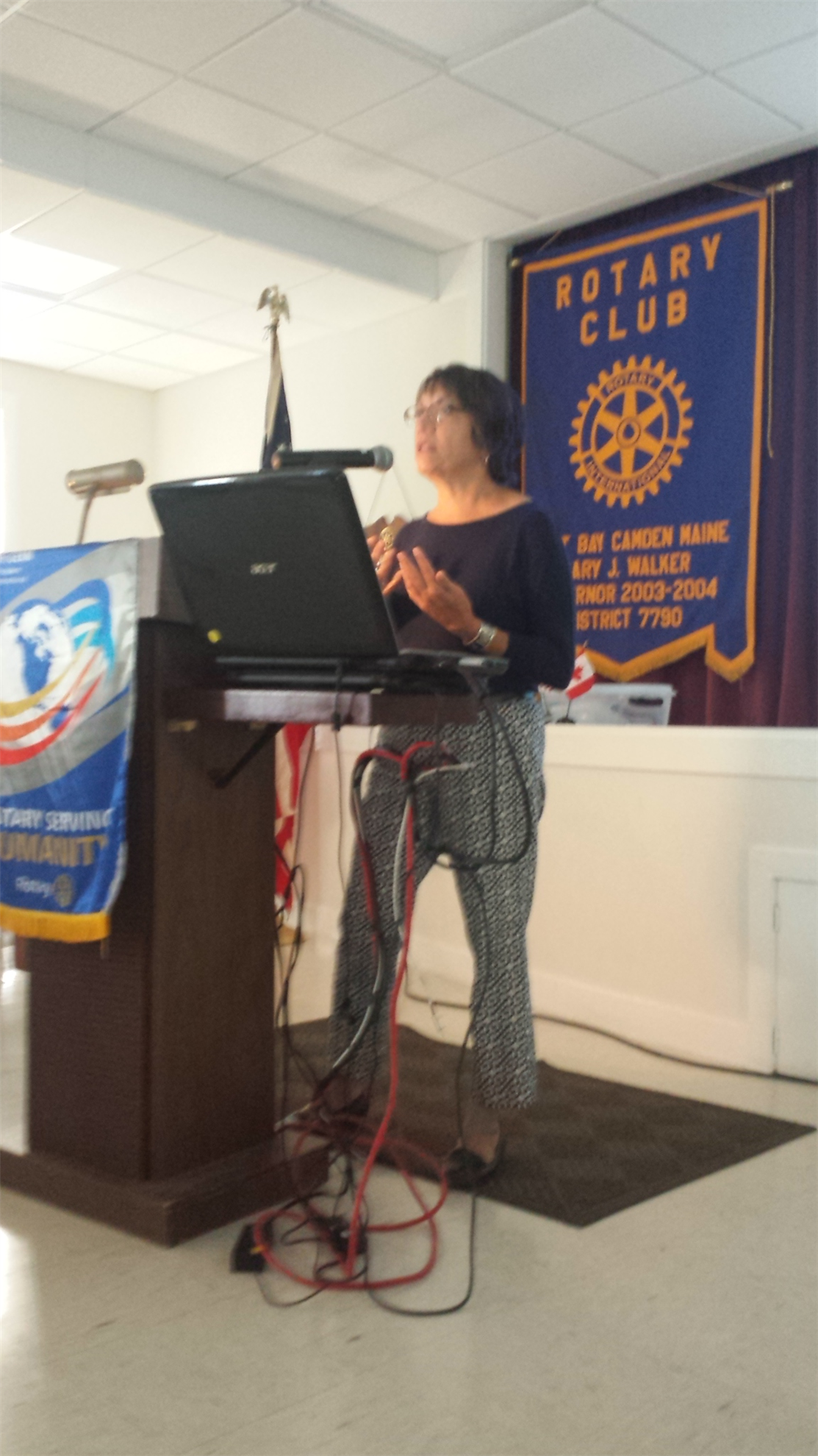August 25, 2016 Meeting of West Bay Rotary

Speaker of day: Annie Kassler on “BATS”
-
Speaker, Bat Conservation International
-
National WNS Communications Group
-
Northeast Bat Working Group
-
Maine Bat Working Group
How did she get into Bats
She experienced a bat at her camp in Maine and like most people, she was terrified. She wanted to gain a better understanding of the bat and became fascinated with them as she learned more and more. As she became educated she began to admire them and wanted to start educating people so that they would admire them too.
Misconceptions of bats
-
They don’t get caught in hair
-
They are not blind
-
They are not dirty, they actually are very good at grooming themselves
-
They are not mean. They are the gentlest animal but that doesn’t mean you should go out of your way to touch them.
-
Not all bats have rabies. Actually .5 of every 1% have it.
-
They are not flying rodents. They actually are highly intellectual and have a shape similar to humans (although the wings are attached to what we would have for arms and legs). Their brains are similar to humans. Their skin is similar to a human eyelid
-
Bats have their own chirp to identify them from others. Incidentally, this chirp is what allows them to identify objects in their way and distance to things. The chirp increases and they get closer to an object and are trying to quickly identify things in their way.

Why care about bats
-
They are the only flying mammal
-
Amazing Linguistics- they are able to communicate with other bats. Complex and highly sophisticated
-
Longevity-Based on their size, they should have a shorter lifespan. They also never tire despite the long flights that they endure
-
DNA repair. They are resistant to age, cancer, infections, and most diseases (exception white nose syndrome). They may hold the story to counter these things in humans
-
They are the #1 predator for insects. They can eat 1000 mosquitos in an hour! They keep insect population down. This could prevent pesticides from being used on farms.
What is killing of the bats
White nose Syndrome is killing of bats by depleting their fat reserves as the bats hibernate over the Winter. The scientist cant figure out why this is happening. Bats fatten up to prepare for the Winter but their body is fighting this syndrome using more fat than the bat has to support them through Winter. If they wake early, there is no food or conditions to support them so they die.
The bats have been getting smarter and moving to new locations despite being fairly regular and love consistency. They don’t like change. They are moving to coastal areas. They are smart and know something is wrong. They are also starting to eat even more to prepare their bodies for the fungus.
There is a lot of research going on around this topic and trying to protect the bats. They are important to our environments. Do you part and encourage bats to love around you with bat houses and allowing them to share barn space. We need them and they need our help too. More information: www.batcon.org (Bat Conservation International); www.whitenosesyndrome.org

